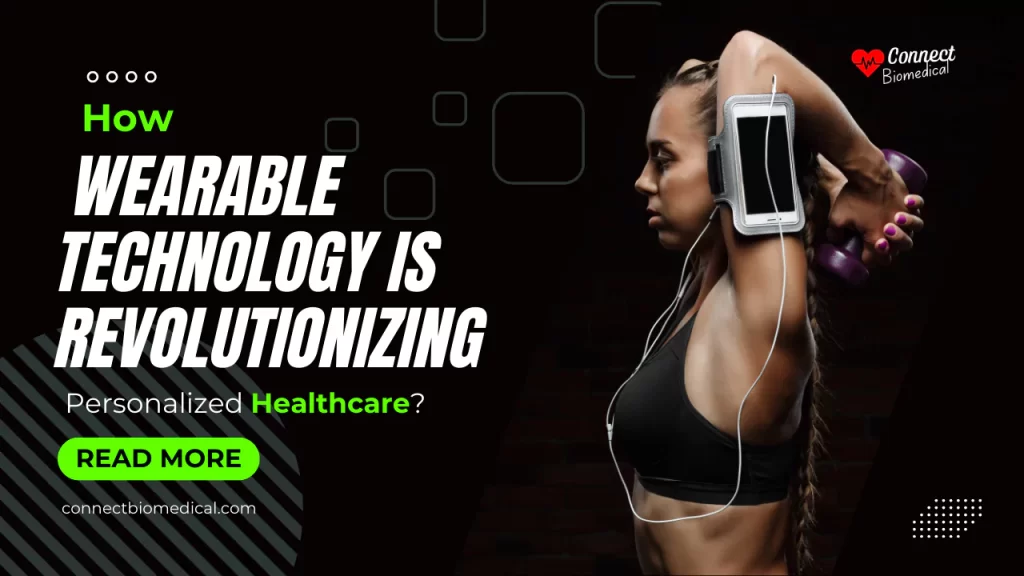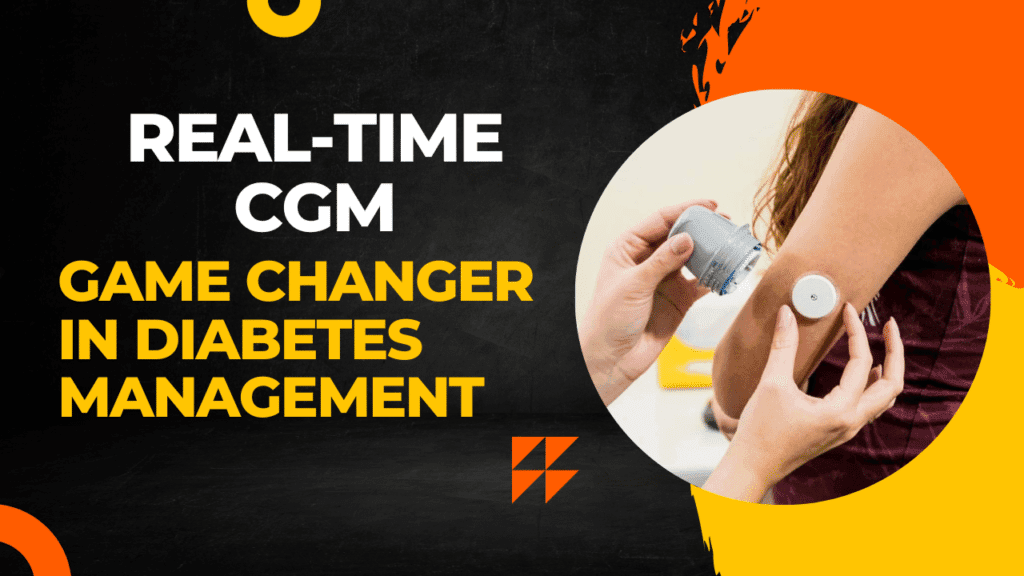Wearable technology in healthcare is simple terminology for devices that patients use to gather information about their health updates and fitness tracking. These devices’ results are further referred to in many helpful places, such as doctors, health providers, insurance, and other relevant reception. The devices prove to collect data in instances like heart rate, sugar levels, blood pressure monitors, and biosensors.
There is this concept called personalized medicines; the approach is based on understanding the disparity among patients with the same disease and the innovation evolved from a one-size-fits-all concept to a personalized and customized one. Personalized medical device makes it easier and possible to predict whether the results are accurate or not if they give valid data.
Applying wearable technology to personalized health care plays a crucial role, as it enables real-time monitoring of an individual’s health, providing the information needed for personalized treatments as per their need. This shift from proactive and reactive healthcare allows for early intervention and better administration of chronic conditions.
Understanding Wearable Technology in Healthcare
In the present time, there are various types of wearable devices such as smartwatches, fitness trackers, sleep patterns, health monitoring gadgets, blood pressure and stress levels. By attaining such details, healthcare providers can develop treatment plans that will effectively treat the unique health needs as per the patient’s requirements. The technologies help patients to participate actively in managing their role in self-healthcare. This will also inform the patients and engage in decision-making based on the real-time feedback from their wearable devices.
The wearable device and health tracking metrics such as:
Step counting and Physical Activity Tracking: Pedometers and gyroscopes within wearable devices are used to measure moments or steps during the move, activity levels, or calories burned. This data helps users monitor and keep track of their fitness goals.
Heart monitoring devices: Most of the wearables have built-in optical sensors, which are used to measure the blood flow under the skin, it enables the device to detect heart rate and heart variability. This device helps in the monitoring of cardiovascular health and adjusts activity levels accordingly. Consegic Business Intelligence analyzes that the cardiovascular monitoring and diagnostic devices market size is growing with a CAGR of 5.0% during the forecast period (2023-2031). The market accounted for USD 19,406.68 million in 2022 and USD 20,248.85 million in 2023, and the market is projected to be valued at USD 29,883.03 Million by 2031.
Resting Patterns: Wearables use motion sensors and heart rate sensors to read the body’s sleep time and resting state. The devices check the sleep quality including the duration of deep or light sleep and further improve sleeping habits and overall well-being.
Additionally, wearable medical devices facilitate a smooth transition of data between patients and healthcare providers, as it works out to be a lot easier to share data and track progress over time. This turns out to be tailored and easier for the doctor to adjust to changes in a patient’s health status.
Moreover, wearable technology makes it more efficient, and precisely leads to upgraded health outcomes, reduces treatment costs, and enhances the quality of life for patients.
The Shift Towards Personalized Healthcare
Personalized medicines referred to as strategic medical treatments and interventions are tailored to an individual’s lifestyle, genetics, and environment. The value is as par in demand because of its ability of effective treatment outcomes, reduce side effects, and patients’ well-being. Data plays a crucial role in customizing healthcare by delivering current-time insights on genetic testing, electronic health records, and wearable medical devices. Wearable technology is pushing forth healthcare overlook demands by continuous monitoring, allowing healthcare providers to strategize treatment plans and adjust according to the patient’s current health status.
Benefits of Wearable Technology in Personalized Healthcare
It serves us with various health benefits just by providing real-time data and monitoring patient’s health. The benefits follow by allowing for early detection due to tracking and avoiding potential harm. Patients out there who have chronic conditions of hypertension and diabetes can be monitored via wearable devices and provided with valuable data. This may help with personalized treatment plans and improve disease management. Furthermore, the wearable enhances doctor-patient communication by transmitting real-time health information, leading to regular intervention and plans for customized care strategies. Apart from consultation with health providers it also provides insights to individuals on their daily habits, physical activity tracking, sleeping patterns, and other metrics assisting in opting for a healthier lifestyle. The approach of monitoring health conditions allows for more precise and strategic decision-making, ultimately contributing to improving patient outcomes and providing enhanced satisfaction with personalized care.
Future Trends and Innovations in Wearable Technology for Healthcare
In the prospects, wearable technology for healthcare will see the emergence of developing technologies such as AI and ML to increase the precision of health data interpretation, enabling more accurate diagnosis, and treatment recommendations. Wearable technology is progressively connecting with smart health devices, such as smart implants and connected medical equipment, creating a consistent healthcare ecosystem. Innovation will enable wearables to play a crucial role in predicting health outcomes and offering proactive solutions, allowing for early intervention and better patient management. Additionally, the improvement will lead to a more connected, efficient, and data-driven healthcare system.
Conclusion
Thus, wearable technology plays a pivotal role in personalized healthcare. It assists in continuous monitoring and real-time data collection, early detection, and initiative-taking treatment process. The implementation of advanced technologies like AI and ML will enhance healthcare data interpretation, further driving the personalization of care. With the potential for broader adoption through incentive and innovation, wearable technology is poised to shape the future of healthcare, driving improved patient outcomes, and fostering a more personalized, efficient, and preventative approach to health management.
Author Bio: I’m Atharva, a content writer currently at Consegic Business Intelligence. With over 3 years of professional experience, I’ve specialized as a ghostwriter for prominent companies and industry publications, exploring various topics.




